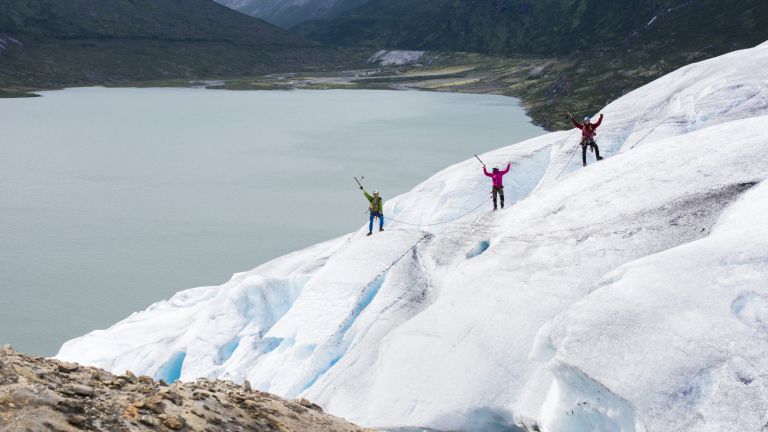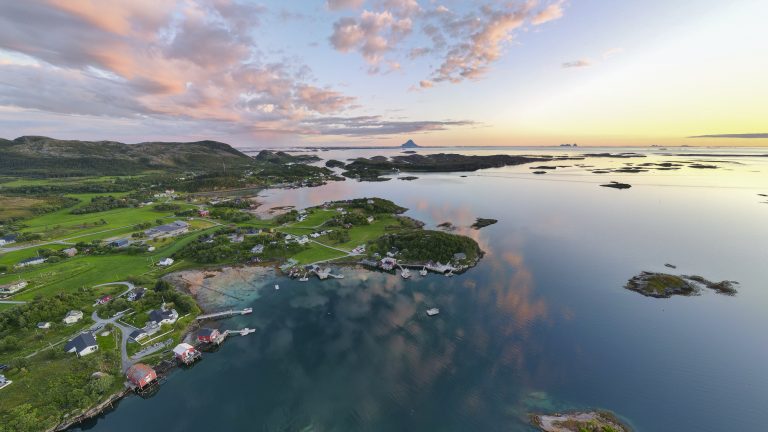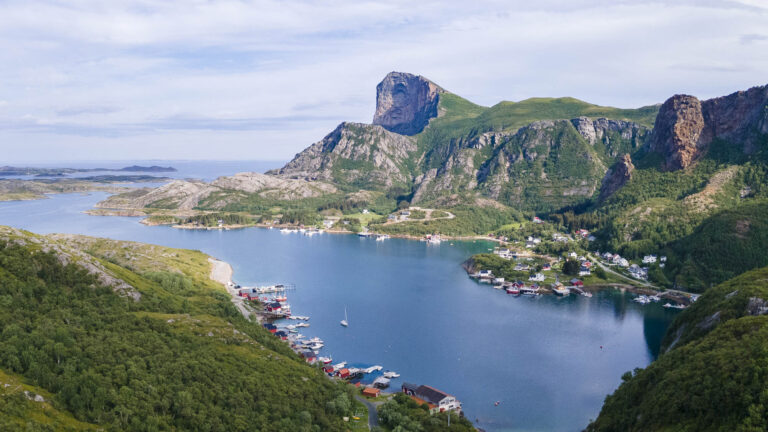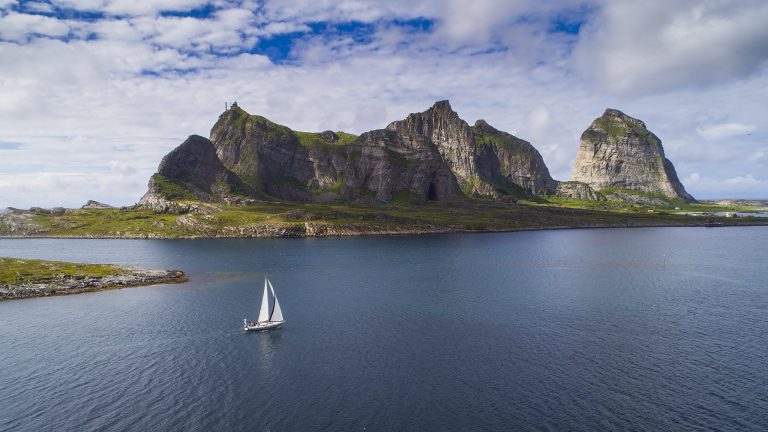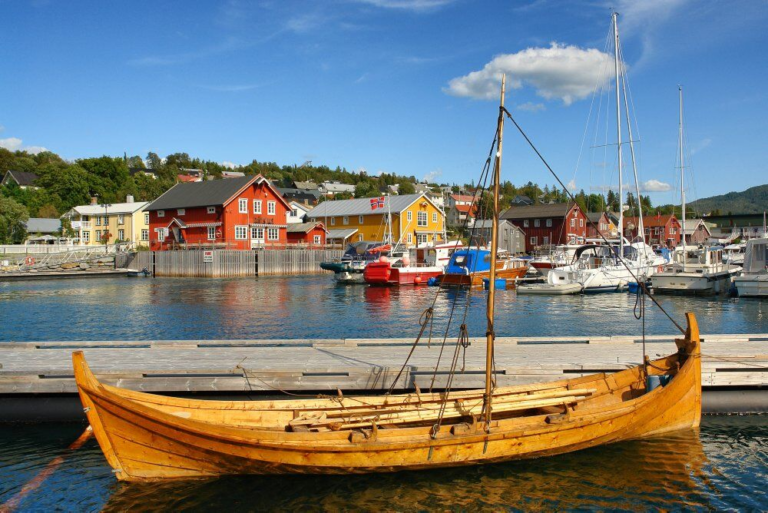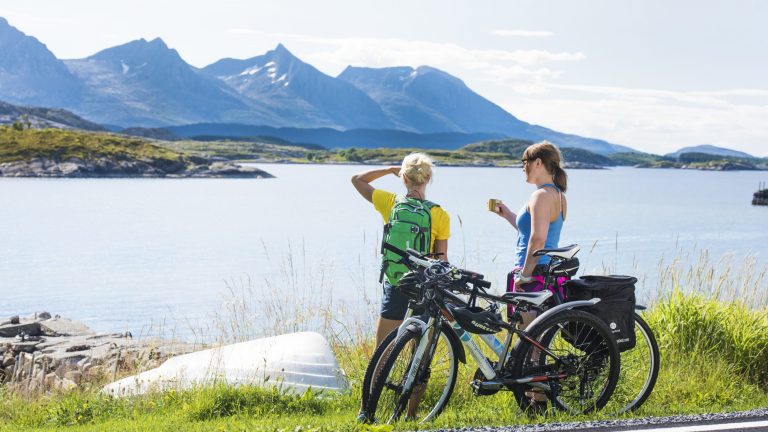Cross the Arctic Circle – a magic boundary
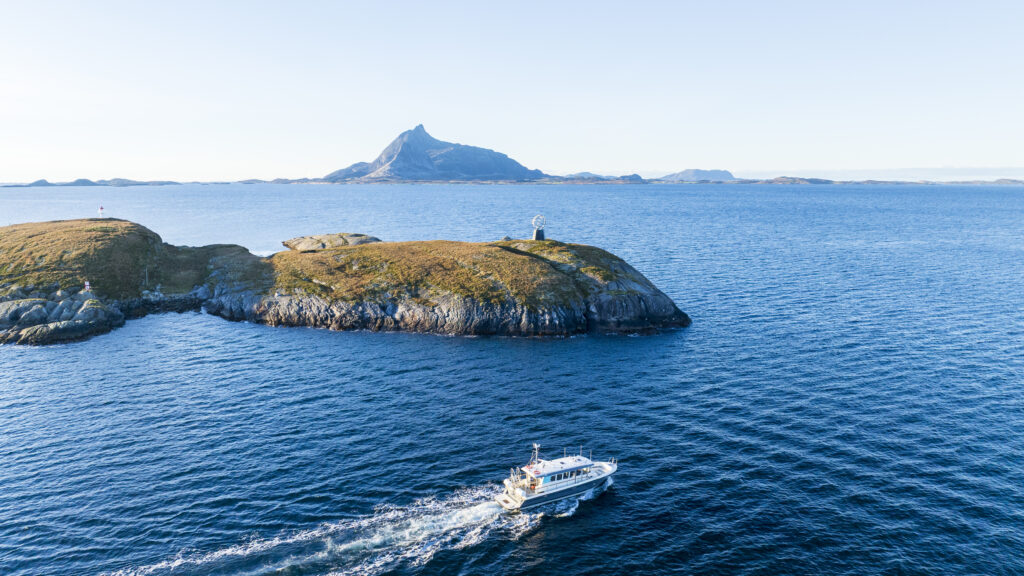 Kristoffer Møllevik / Visit Helgeland
Kristoffer Møllevik / Visit Helgeland
If you drive over Saltfjellet in the north of Helgeland, you cross the Arctic Circle. You can also cross this magic boundary as you travel the Helgeland coast by express boat of ferry.
Northbound on highway E6 on Saltfjellet, you cross the Arctic Circle about an hour’s drive north of Mo i Rana. Find it with Google Maps.
On the small island of Vikingen, the Arctic Circle Monument marks the magic boundary. You will pass it if you take the ferry between Kilboghamn and Jektvik. Find Vikingen in Google Maps.
The Arctic Circle in Helgeland
In Helgeland, the Arctic Circle cuts through the municipalities of Træna, Lurøy, Rødøy and Rana.
On highway E6 northbound, you pass the Arctic Circle at Saltfjellet. In fact you find the Arctic Circle Centre here, at 66°33’N. The distinctive building has been designed to fit into the surrounding scenery. There is also a café and souvenir shop here. All postcards and letters posted here receive a special Arctic Circle stamp.
Another very visible announcement that you are crossing the magic boundary is the globe-shaped Arctic Circle Monument on the little island of Vikingen, situated north of Tonnes. It is a well-known sailing mark and is illuminated so it also is visible at night. The Norwegian coastal steamer, Hurtigruten, makes quite a ceremony of passing this island; any passenger who wishes may request to be “baptised” upon passing the Arctic Circle.
For those driving along the Helgeland coast, you will cross the Arctic Circle onboard the ferry between Kilboghamn and Jektvik.
Itineraries that cross the Arctic Circle
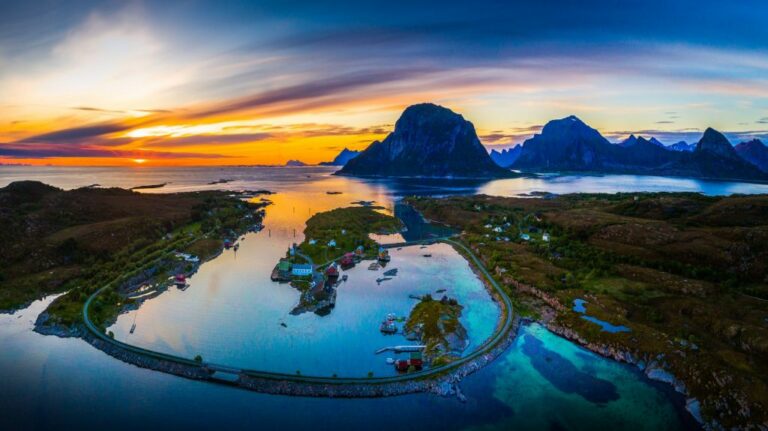
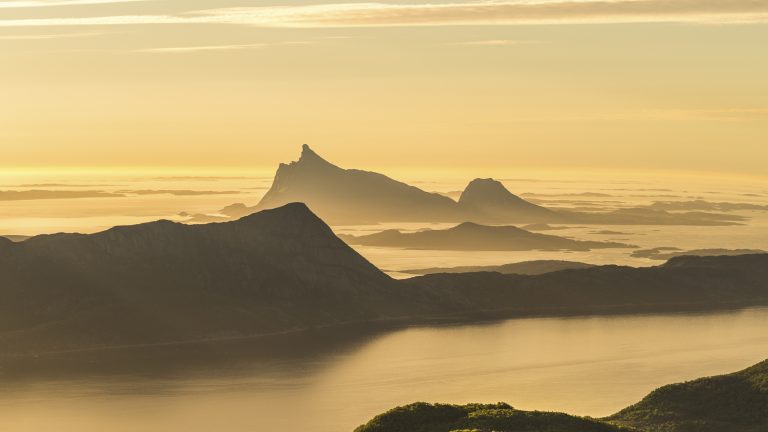
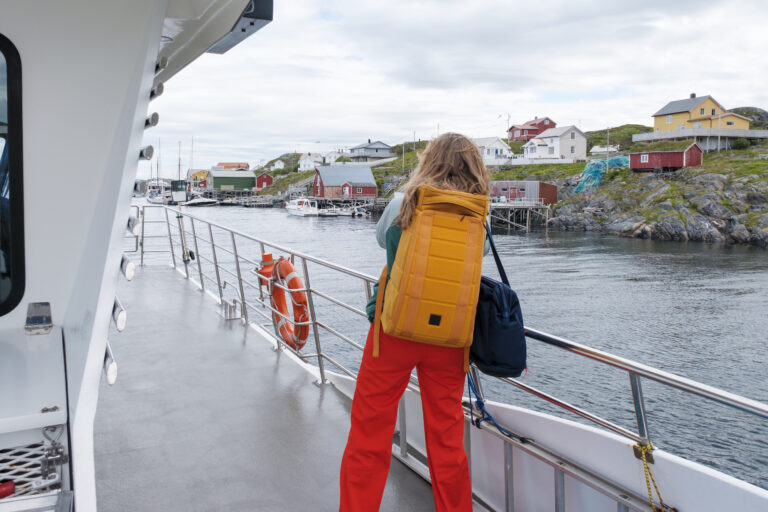
Cross the Arctic Circle Without a trace
Many travelers cross the Arctic Circle while driving on the E6 over Saltfjellet and often stop at the Arctic Circle Center. At this unique boundary, most visitors respectfully enjoy the moment without disturbing the surrounding fragile environment. They take pictures, send a postcard stamped from the Arctic Circle, or take a short walk in the stunning mountain landscape.
Among the hundreds of thousands of visitors each year, a few choose to mark their crossing by building a cairn. While this may seem harmless, both plant and animal life in the mountains are extremely vulnerable, and even minor disturbances can lead to significant damage.
By traveling without a trace and leaving rocks, plants, and animals undisturbed, you help us preserve this delicate natural environment, ensuring that those who come after us can also experience it undisturbed, just as we are fortunate enough to do now.
Cairns that aren’t intended as waymarkers, or aren’t historic cultural relics, are referred to as “wild cairns.” These are cairns that other hikers and visitors have erected merely for fun or to mark their presence. While it may seem harmless, here are five simple reasons why you shouldn’t build them:
Wild cairns mislead hikers
Cairns serve as crucial navigational aids on mountaintops and along trails, and can be vital for guiding hikers safely in poor weather. New cairns can confuse and mislead others, leading them off the path and increasing wear on the terrain.
When we travel without leaving a trace, we make mountain journeys safer.
Wild cairns harm plant and animal life
Where one person builds a small cairn, others often follow suit. As more stones are removed from the ground and piled up, the surrounding plants die, leaving only sand.
Even small stones on the ground in the mountains provide shade, retain moisture, and shelter plants and grass crucial for the local wildlife. Creatures such as mice and lemmings, arctic foxes, birds of prey, and grazing animals like reindeer and sheep all rely on this.
Travelling without a trace helps preserve and support the fragile plant and animal life we cherish in the mountains.
Wild cairns disrupt the natural experience
One of the joys of trekking in Norway’s mountains is the vast, undisturbed natural landscapes. They offer a sense of being part of something greater, where many find space for reflection, thought, mastery of new skills and personal growth.
Wild cairns disrupt this experience. The presence of numerous small and large cairns along the path constantly reminds us that others were here before us, as if to shout, “Hey, I was here first, and this is my mark to prove it!”
By leaving no trace, we allow those who follow to experience nature on their own terms, undisturbed and free.
Wild cairns could destroy cultural heritage
Throughout our mountains, you might find cultural relics dating back hundreds or even thousands of years. These might be old cairns used by shepherds and hunters, ancient Sami campfire sites, or even fences and windbreaks from the Stone Age!
But to an untrained eye, these might not be obvious. What you think is a collapsed cairn could actually be a thousand-year-old, irreplaceable cultural relic. Rather than moving stones to build a new cairn, we should pause and enjoy discovering such a witness of another age, respecting that we walk in the footsteps of those who came before us, from Stone Age hunters and Vikings to cartographers and telegraph builders.
By passing gently and leaving the stones undisturbed, we preserve and share this experience with future generations.
Share the experience with the future
By enjoying these magnificent natural landscapes without leaving our own traces, and by not disturbing the traces already there, we preserve them for the future. This way, our grandchildren, and their grandchildren can still pick cloudberries, smell the heather, watch mountain foxes and reindeer in undisturbed nature.
Thank you for helping us preserve this fragile environment.
What exactly is the Arctic Circle?
Simply put, the Arctic Circle is the theoretical boundary for how far south you can see the midnight sun, and likewise the southernmost boundary for the Arctic winter when the sun never rises. However, due to atmospheric refraction, you can actually see the midnight sun all the way down to Vega. All the same, during the winter, much of Helgeland experiences several weeks of darkness, when the sun is below the horizon or so low in the sky that the day never gets brighter than twilight.
Saltfjellet-Svartisen National Park
If you love the great outdoors and are travelling over Saltfjellet, we recommend you consider hiking and fishing in this beautiful national park. The Norwegian Trekking Association (DNT) has numerous cabins that are nicely spaced, with comfortable day hikes between them.
